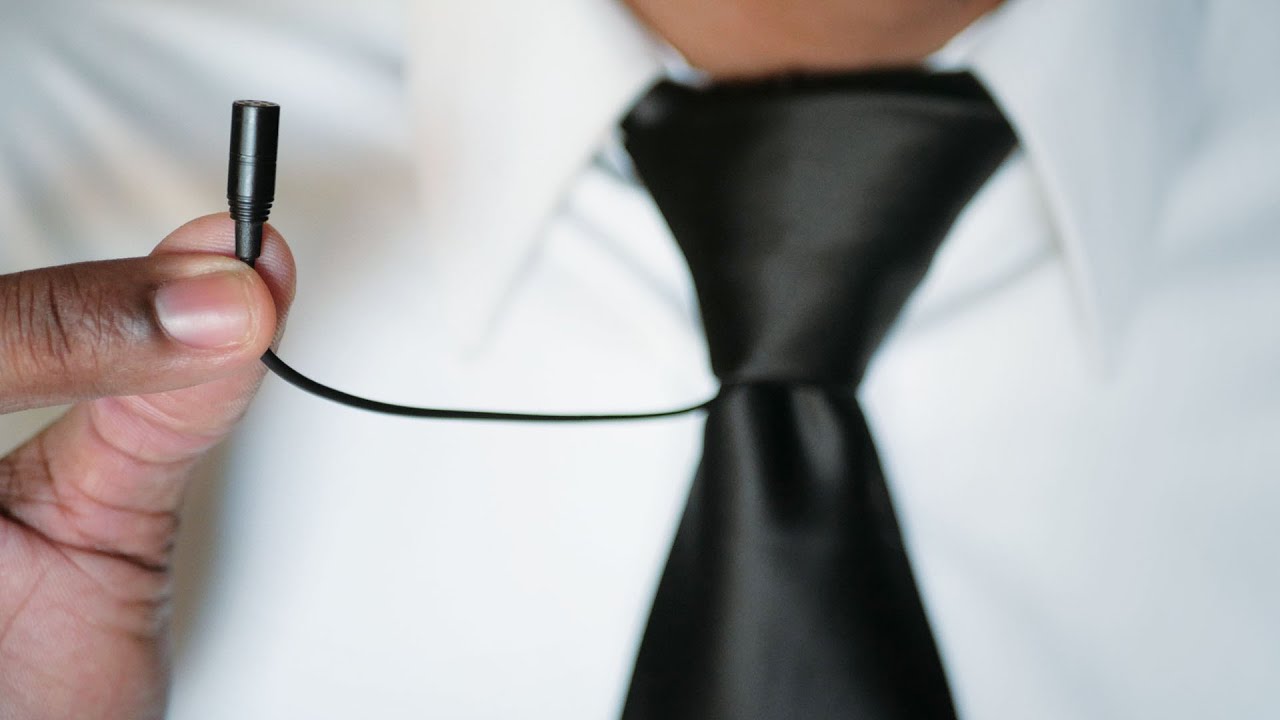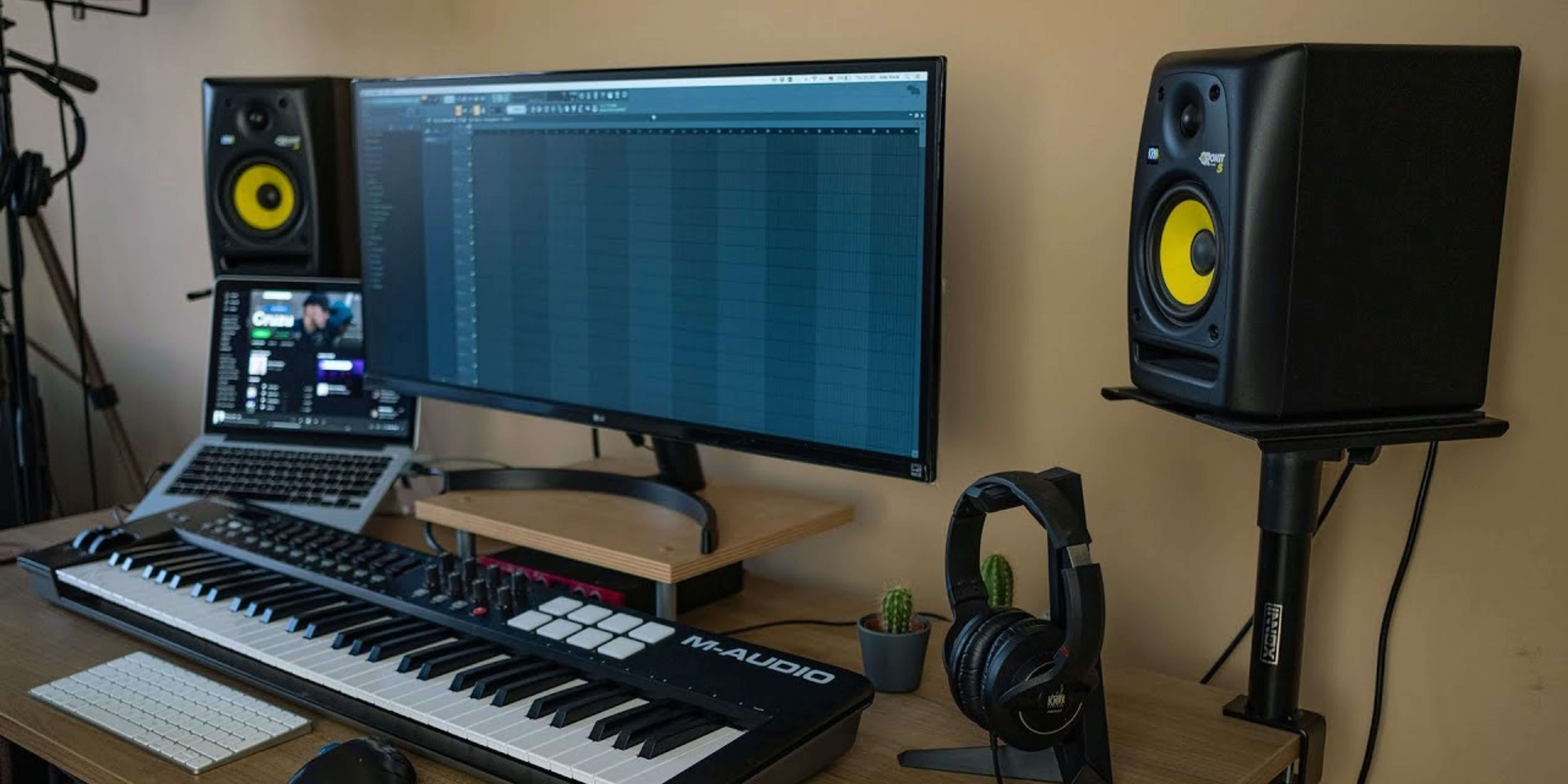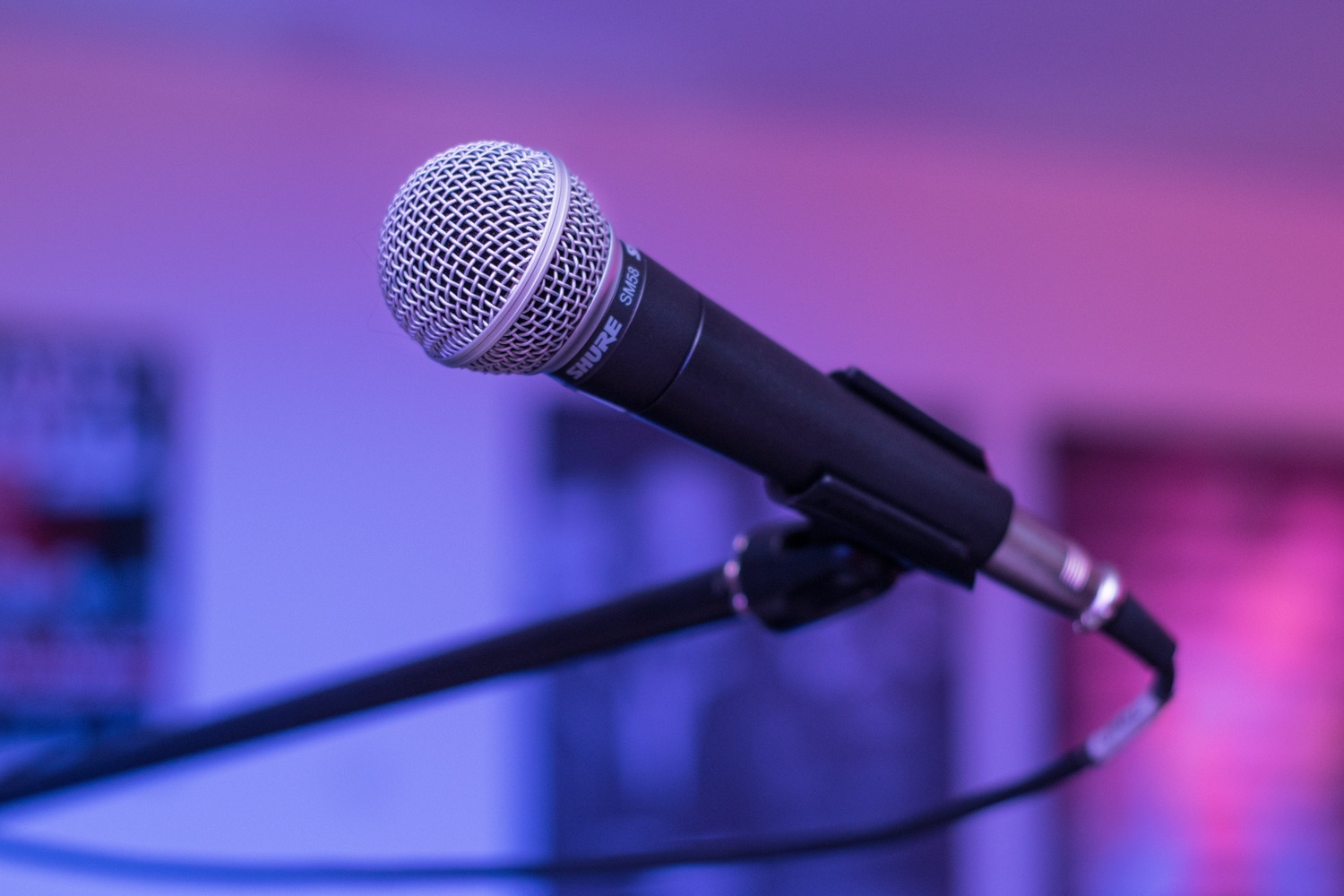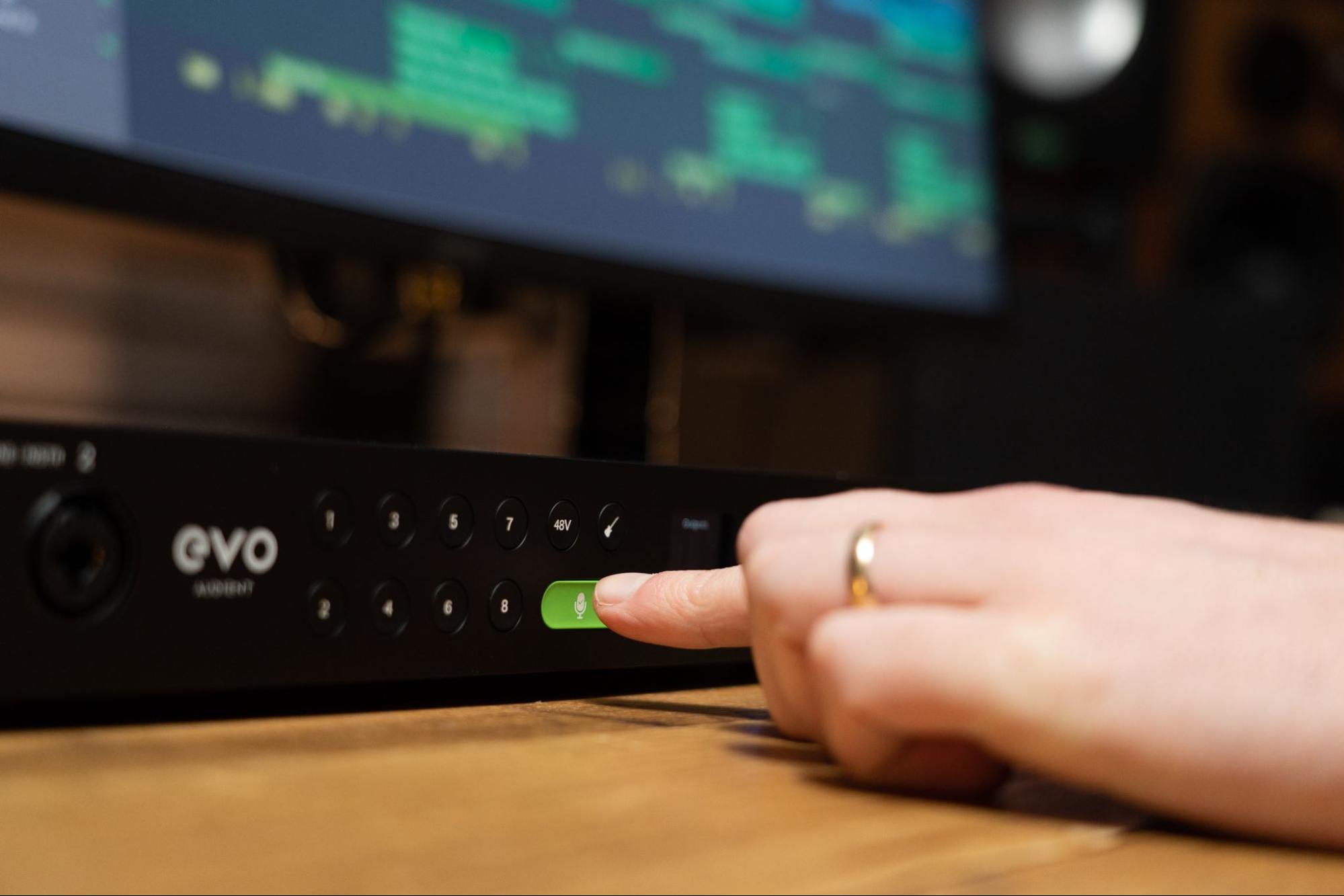Home>Devices & Equipment>Microphone>How To Boost Your Microphone


Microphone
How To Boost Your Microphone
Modified: February 17, 2024
Learn the best techniques to boost your microphone for clear and crisp sound. Improve your audio quality with these microphone boosting tips. Boost your microphone performance today!
(Many of the links in this article redirect to a specific reviewed product. Your purchase of these products through affiliate links helps to generate commission for AudioLover.com, at no extra cost. Learn more)
Table of Contents
Introduction
Are you ready to take your audio recordings to the next level? Whether you're a podcaster, musician, content creator, or simply someone who loves crystal-clear sound, optimizing your microphone setup can make a world of difference. In this guide, we'll explore the essential tips and tricks to boost your microphone performance and elevate the quality of your recordings.
A high-quality microphone is a powerful tool that can capture the nuances of sound with remarkable precision, allowing you to convey emotions, capture musical performances, and communicate with clarity. However, to fully harness the potential of your microphone, it's crucial to understand its intricacies and learn how to optimize its performance.
Throughout this article, we'll delve into the fundamental aspects of microphones, from selecting the right type for your specific needs to mastering the art of proper placement and maintenance. Additionally, we'll uncover the significance of accessories like pop filters and windshields, and explore the intricacies of adjusting input levels and gain to achieve optimal results.
Whether you're a novice seeking guidance on setting up your first microphone or a seasoned professional aiming to refine your recording techniques, this comprehensive guide is designed to equip you with the knowledge and expertise needed to unlock the full potential of your microphone. Let's embark on this enlightening journey to transform your audio recordings into captivating, professional-quality masterpieces.
Understanding Microphone Basics
Before delving into the intricacies of microphone optimization, it’s essential to grasp the fundamental principles that underpin the functionality of these remarkable devices. Microphones are transducers that convert sound waves into electrical signals, effectively capturing acoustic vibrations and transforming them into a format that can be amplified, recorded, or broadcasted.
There are several types of microphones, each utilizing distinct technologies to capture sound. Dynamic microphones are rugged and versatile, making them ideal for live performances and recording loud sound sources. Condenser microphones, on the other hand, offer exceptional sensitivity and transient response, making them well-suited for capturing subtle details and acoustic instruments.
Understanding the directional characteristics of microphones is equally crucial. Omnidirectional microphones capture sound from all directions, while cardioid microphones are more focused, primarily picking up sound from the front while minimizing rear and side noise. Bidirectional and shotgun microphones have unique directional properties, catering to specific recording requirements.
Furthermore, it’s important to consider the frequency response of a microphone, which denotes its sensitivity to different frequencies. A flat frequency response ensures accurate reproduction of sound across the entire audible spectrum, while tailored frequency responses can impart specific sonic characteristics to the recorded audio.
By comprehending these foundational aspects of microphones, you can make informed decisions when selecting a microphone that aligns with your intended applications and artistic preferences. Additionally, this knowledge forms the bedrock for implementing effective microphone optimization strategies, ultimately enhancing the quality and fidelity of your audio recordings.
Choosing the Right Microphone
When embarking on your journey to optimize microphone performance, selecting the most suitable microphone for your specific needs is paramount. The diverse array of microphone types and models available can be overwhelming, but understanding the key considerations can streamline the decision-making process.
First and foremost, assess the primary application for which the microphone will be used. If you’re a vocalist or instrumentalist, a condenser microphone may be the optimal choice for capturing the nuances of your performances with exceptional clarity and detail. Conversely, for live performances or recording high-volume sound sources, a dynamic microphone’s robustness and versatility may be more suitable.
Consider the environment in which the microphone will be utilized. For studio recording in a controlled acoustic environment, a sensitive condenser microphone can excel in capturing the subtleties of sound. In contrast, for on-location audio capture or live sound reinforcement, a dynamic microphone’s durability and resistance to feedback may be advantageous.
Another crucial factor to contemplate is the microphone’s directional characteristics. If you require focused sound capture with minimal ambient noise, a cardioid or supercardioid microphone may be preferable. On the other hand, if you aim to capture the ambiance of a space or a group of performers, an omnidirectional microphone could be more suitable.
Additionally, consider the microphone’s frequency response to ensure it complements the tonal characteristics of the sound source. Some microphones exhibit tailored frequency responses designed to enhance specific instruments or vocal timbres, while others offer a flat, uncolored response for transparent sound reproduction.
Ultimately, the quest for the right microphone involves balancing technical specifications with subjective tonal preferences and artistic considerations. By aligning the microphone’s characteristics with your unique recording objectives, you can elevate the sonic quality of your recordings and unleash the full potential of your artistic expression.
Proper Placement and Positioning
Once you’ve selected the ideal microphone for your recording needs, the next critical step in optimizing its performance is ensuring proper placement and positioning. The placement of a microphone significantly influences the tonal quality, clarity, and balance of the recorded sound, making it essential to master the art of strategic microphone placement.
For vocal recordings, positioning the microphone at an optimal distance from the performer is crucial. Placing the microphone too close can result in exaggerated low-frequency response and plosive sounds, while situating it too far may lead to a loss of intimacy and presence in the vocal delivery. Experimenting with different distances and angles can help you identify the sweet spot that captures the desired tonal characteristics and nuances of the performance.
When recording instruments, understanding the instrument’s sound projection and tonal characteristics is pivotal in determining the microphone placement. For instance, when miking a guitar amplifier, placing the microphone off-center from the speaker cone can yield varying degrees of brightness and warmth, allowing you to tailor the recorded tone to suit the musical context.
Consider the room acoustics when positioning microphones for recording. In a reverberant space, adjusting the microphone’s distance and angle relative to the sound source and room boundaries can mitigate excessive room ambiance or enhance the desired sense of spaciousness and depth in the recording.
Furthermore, when using multiple microphones to capture a sound source or ensemble, meticulous attention to phase coherence and microphone-to-source distance is essential to avoid phase cancellation and achieve a cohesive, well-defined sound image in the mix.
It’s important to note that experimentation and attentive listening play a pivotal role in refining microphone placement. Small adjustments in microphone position can yield significant sonic differences, empowering you to sculpt the tonal characteristics and spatial imagery of your recordings with precision and artistry.
By mastering the principles of proper microphone placement and positioning, you can harness the full sonic potential of your microphone, capturing performances with unparalleled fidelity and expressive depth.
Using Pop Filters and Windshields
Pop filters and windshields are indispensable accessories that play a pivotal role in enhancing the quality of audio recordings by mitigating unwanted noise and disturbances caused by plosive sounds, breath blasts, and environmental air currents. These accessories are particularly valuable when recording vocals, as they help maintain a consistent and clear sonic output.
Pop filters, often comprised of a fine mesh or nylon screen, are positioned between the vocalist and the microphone to intercept bursts of air that occur during speech, preventing them from reaching the microphone diaphragm. By diffusing these plosive sounds, pop filters effectively reduce the occurrence of disruptive plosives, such as the “p” and “b” sounds, resulting in a smoother and more balanced vocal recording.
Similarly, windshields, commonly utilized in outdoor or on-location recording scenarios, serve to minimize the impact of wind noise and environmental air movement on the microphone diaphragm. They are particularly beneficial when recording outdoor interviews, field recordings, or live performances, where wind and air currents can compromise the clarity and fidelity of the audio capture.
When selecting pop filters and windshields, consider their compatibility with the specific microphone model and their effectiveness in attenuating unwanted noise without compromising the sonic transparency and frequency response. Additionally, the ease of installation and maintenance should be taken into account to ensure seamless integration into your recording setup.
By incorporating pop filters and windshields into your microphone setup, you can significantly elevate the professionalism and sonic integrity of your recordings, ensuring that vocal performances remain clear, articulate, and free from distracting artifacts caused by plosive sounds and environmental disturbances.
Adjusting Input Levels and Gain
Optimizing the input levels and gain settings of your microphone is a critical aspect of achieving pristine audio recordings with optimal signal-to-noise ratio and dynamic range. Properly setting the input levels ensures that the microphone signal is neither overdriven, which can lead to distortion, nor too low, resulting in an increased noise floor and reduced clarity.
When adjusting input levels, it’s essential to strike a balance that allows for robust signal capture without encountering clipping or distortion. Most audio interfaces and preamplifiers feature input level controls that enable precise adjustment of the incoming signal strength. Monitoring the input meters and employing sound-check procedures can aid in determining the ideal input level for a given sound source.
Gain, on the other hand, amplifies the microphone signal to an appropriate level for processing and recording. While setting the gain, it’s crucial to consider the microphone’s sensitivity, the sound source’s volume, and the desired signal-to-noise ratio. For dynamic microphones, a higher gain setting may be necessary to achieve adequate signal strength, while condenser microphones, with their higher sensitivity, may require lower gain levels.
It’s important to exercise caution when adjusting gain levels, as excessive gain can introduce noise and compromise the integrity of the audio signal. Additionally, understanding the characteristics of the sound source and its dynamic range can inform the appropriate gain settings, ensuring that subtle nuances and transient details are faithfully captured without distortion or signal degradation.
When recording quieter sound sources or delicate acoustic performances, employing higher gain settings and a conservative input level can help preserve the nuances and intricacies of the performance, allowing for a more detailed and expressive recording. Conversely, for louder sound sources, judicious gain reduction and meticulous input level management can prevent signal overload and maintain clarity and fidelity.
By mastering the art of adjusting input levels and gain, you can optimize the performance of your microphone, ensuring that your recordings exhibit exceptional clarity, dynamic range, and fidelity, while minimizing unwanted noise and distortion.
Cleaning and Maintaining Your Microphone
Proper maintenance and regular cleaning are essential practices to preserve the performance and longevity of your microphone. By implementing routine maintenance procedures, you can safeguard against degradation in audio quality, prevent mechanical issues, and ensure that your microphone consistently delivers optimal results.
One of the primary maintenance tasks involves keeping the exterior and grille of the microphone clean and free from dust, dirt, and debris. Using a soft brush or microfiber cloth, gently remove any accumulated particles from the microphone’s surface and grille. Additionally, employing a mild cleaning solution specifically formulated for microphones can help eliminate stubborn residues without causing damage to the microphone’s finish.
It’s important to exercise caution when cleaning the microphone diaphragm, as it is a sensitive component that directly impacts sound capture. Avoid using abrasive materials or excessive force when cleaning the diaphragm, as this can lead to irreparable damage and compromise the microphone’s performance. Instead, adhere to the manufacturer’s guidelines and recommendations for cleaning the diaphragm, utilizing approved cleaning solutions and techniques.
Inspect and clean the microphone connectors and cables regularly to ensure optimal signal transfer and electrical connectivity. Over time, connectors can accumulate oxidation and debris, leading to signal degradation and intermittent connectivity issues. Using contact cleaner and gently reseating the connectors can help maintain reliable electrical connections and prevent signal disruptions.
When storing your microphone, utilize protective cases or storage solutions designed specifically for microphones to shield them from environmental factors, physical damage, and moisture. Proper storage not only safeguards the microphone’s physical integrity but also prevents the accumulation of dust and debris, minimizing the need for frequent cleaning and maintenance.
Regularly inspect the microphone stand or mounting hardware to ensure stability and structural integrity. Loose or damaged components can compromise the microphone’s positioning and lead to unwanted vibrations and handling noise during recordings. Addressing any issues promptly and ensuring the stability of the microphone setup is crucial for maintaining consistent audio quality.
By incorporating these cleaning and maintenance practices into your microphone care regimen, you can prolong the lifespan of your microphone, uphold its sonic performance, and safeguard against potential issues that may arise from neglect or improper care. Consistent maintenance not only preserves the functionality of your microphone but also contributes to the longevity of your investment, ensuring that it continues to deliver exceptional audio quality for years to come.
Conclusion
Embarking on the journey to optimize your microphone performance is a transformative endeavor that empowers you to elevate the quality and impact of your audio recordings. By gaining a comprehensive understanding of microphone basics, selecting the right microphone for your specific needs, mastering proper placement and positioning, and leveraging essential accessories such as pop filters and windshields, you can significantly enhance the sonic fidelity and clarity of your recordings.
Furthermore, the meticulous adjustment of input levels and gain settings enables you to capture performances with optimal signal-to-noise ratio and dynamic range, ensuring that subtle nuances and expressive details are faithfully preserved. Additionally, prioritizing the cleaning and maintenance of your microphone safeguards its performance and longevity, preserving its sonic integrity and reliability for years to come.
As you embark on this enriching journey of microphone optimization, remember that experimentation, attentive listening, and a commitment to continuous improvement are invaluable allies in refining your recording techniques and achieving exceptional sonic results. Embrace the artistry and technical precision inherent in microphone optimization, and let your passion for audio excellence propel you toward new heights of creativity and expression.
Armed with the knowledge and insights gleaned from this guide, you are equipped to unleash the full potential of your microphone, transforming your audio recordings into captivating, professional-quality masterpieces that resonate with clarity, emotion, and sonic brilliance.
May your microphone become a trusted ally in capturing the beauty of sound, and may your recordings inspire and captivate audiences with their unparalleled quality and artistry.











